
Python is a very powerful programming language yet also one of the easiest to learn thanks to its simple, English-like syntax (the actual Python code).
Still, the kind of resource you use for learning python can be the difference between frustration and having the concepts clicking fast. Especially for beginners new to programming. And why it’s important to choose a really good python book.
The best python book for you will depend on your programming skill level and your motivation for learning python.
In this article, you’ll discover the overall best python books for beginners, kids, intermediate and advanced python programmers.
And if you want to use python for data analysis or machine learning, there’s something for you too.
Disclosure: This article includes affiliate links that may provide a commission to me at no cost to you if you make a purchase through them.
Table of Contents
Which are the Best Python Books for Beginners?
Python Crash Course, 2nd Edition: A Hands-On, Project-Based Introduction to Programming
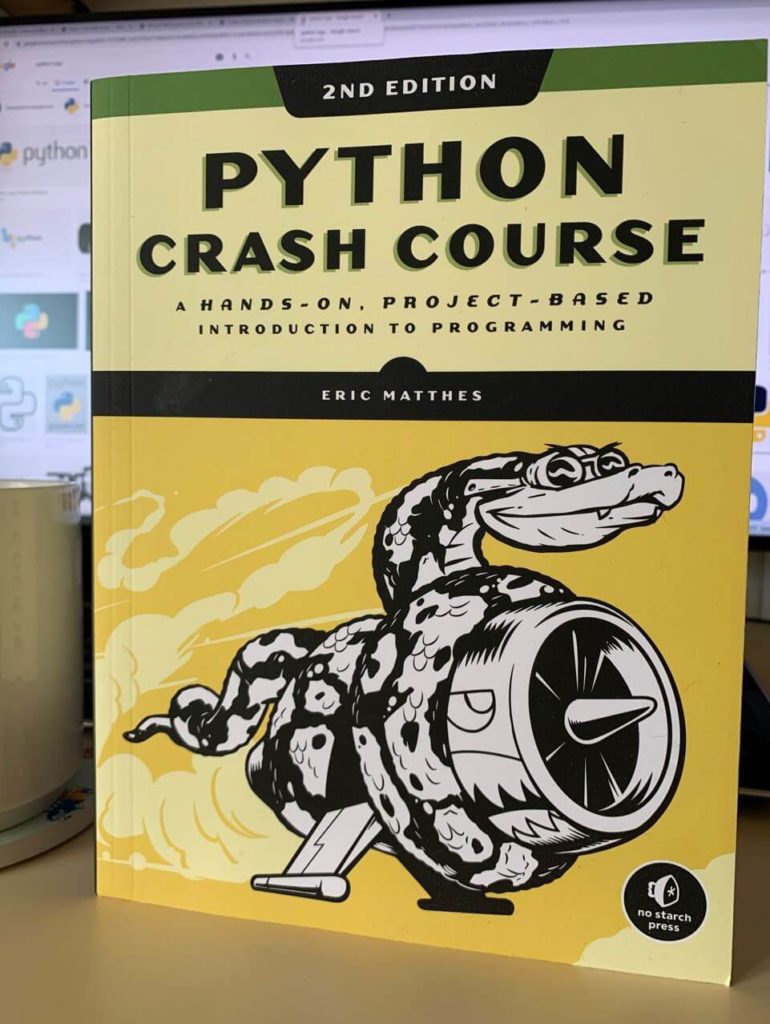
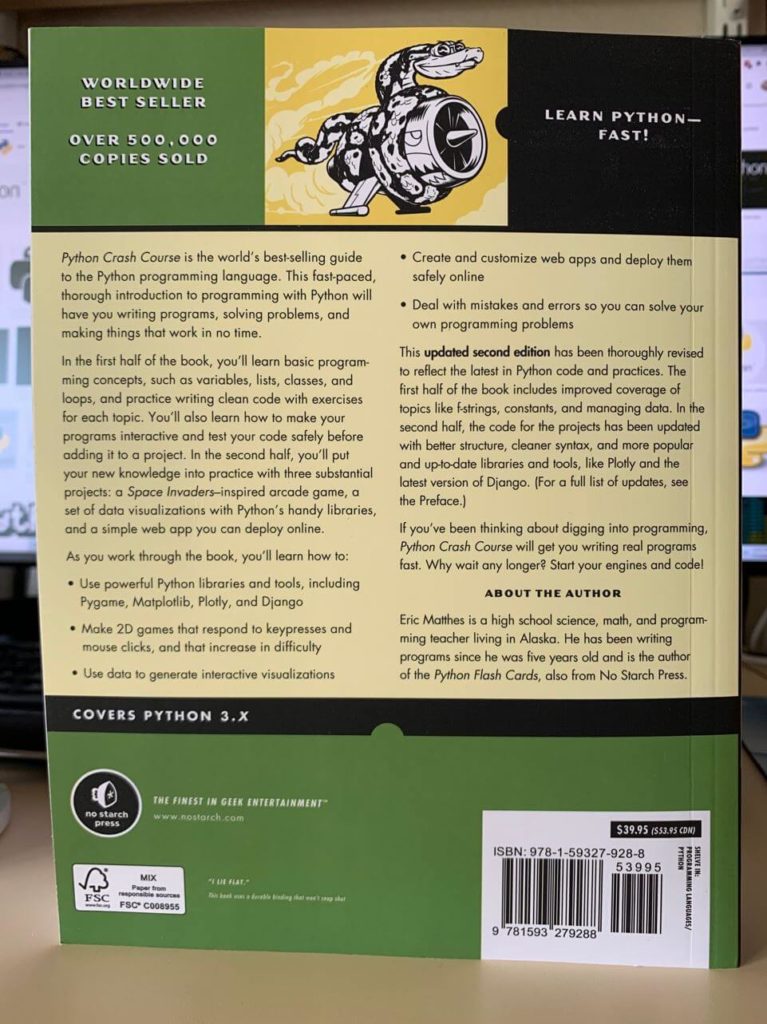
Summary
By Eric Matthe
Python Crash Course is the best-selling python book for beginners for good reason. A quick glimpse from Amazon shows almost 5,000 ratings, the most we’ve seen of any Python book.
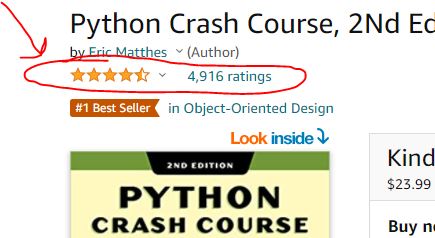
It will ease you into each topic, explain it in a crystal-clear way, and demonstrate coding with follow along exercises. A very positive experience when learning your first coding language!
At the end of the book, you will develop three different programs that will help solidify what you’ve learned.
Who’s It For
Hands down, Python Crash Course is the best python book for beginners. No prior coding knowledge or a background in tech required to learn from the book.
What’s Covered
The basic topics including variables, lists, classes, loop, python libraries and tools, writing python code, testing it and making it interactive, 2D games, data visualization, and web apps.
The practical projects include a game, a web app, and data visualization.
Pros
- Instills a solid foundation in coding
- Presented in a logical way
- Easy to understand writing style
- In-depth explanation of code snippets
- Revised and up to date
- Three practical projects
Cons
- Intermediate developers might find the explanations tedious
Where to Buy
Automate the Boring Stuff with Python, 2nd Edition: Practical Programming for Total Beginners
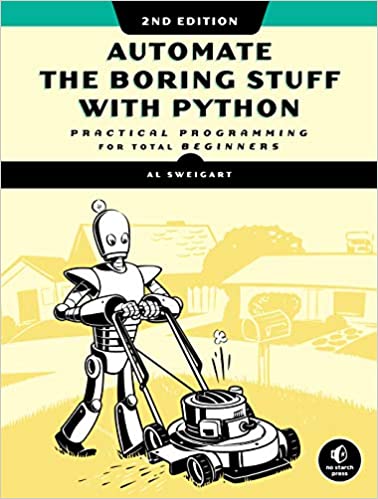
Summary
By Al Sweigart
The practical approach makes Automate the Boring Stuff with Python one of the best books for learning python for those new to programming.
It’s the second best book to pick once you’re done with the Python Crash Course.
It’s also the best first book if your goal for learning python is to automate tedious tasks.
Who’s It For
Automate the Boring Stuff with Python is geared towards those learning python for the first time. No prior programming experience is required.
It’s especially perfect for administrators, academicians, or anyone who wishes to automate certain tasks to boost productivity.
What’s Covered
The basics of Python and the modules needed to develop programs that perform tasks like data scraping, reading documents, automating typing, sending emails, updating files, searching the web and more.
Pros
- The practical approach makes python less daunting
- Step by step instruction and practical projects
- Breaks down sections into bite-sized chunks
- Accompanied by great online resources
Cons
- It’s not very well organized for a total newbie
Where to Buy
Learn Python 3 the Hard Way
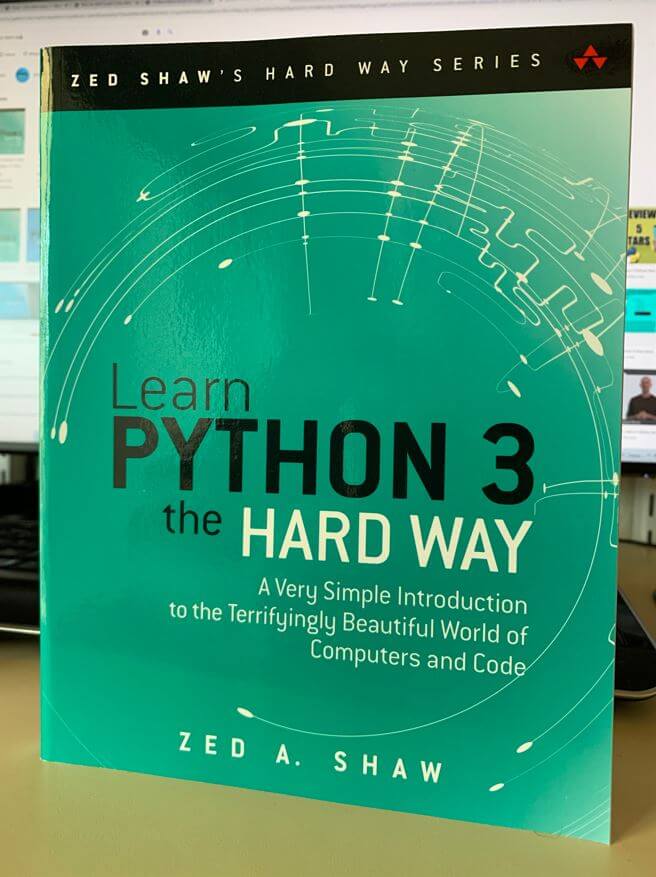
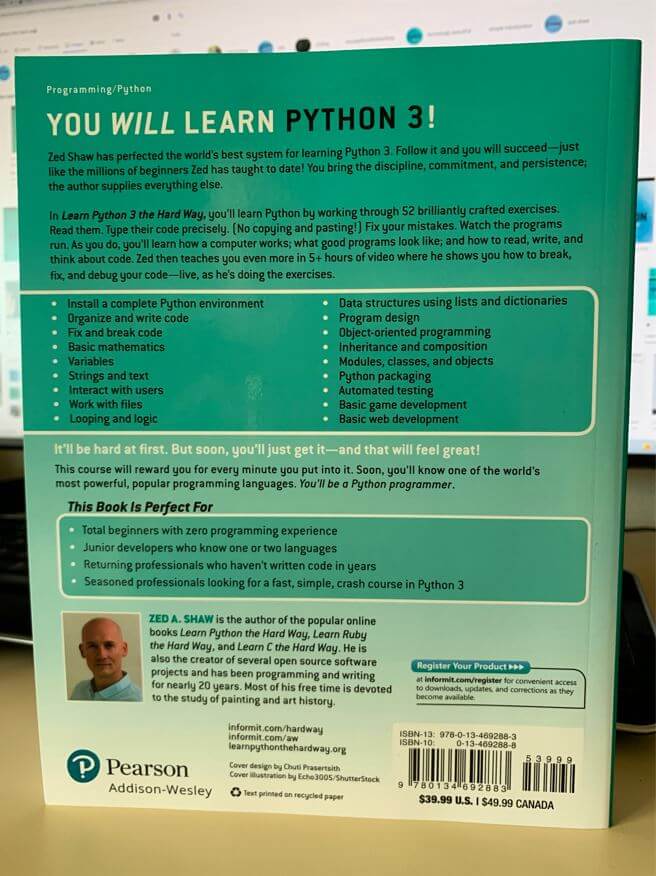
Summary
By Zed Shaw
Zed’s book Learn Python 3 the Hard Way is actually a simple intro to programming despite the “hard” part in the book name. The “hard way” is really just another name for “instruction”. Meaning the book has the reader go through exercises, typing in each Python example file exactly, then making that file run.
At first this may seem difficult but you’ll get used to it. And then things get a lot easier once you’re used to learning this way (learning by doing).
Who’s It For
The total beginner who isn’t familiar with programming. Expect to learn the basics all the way to advanced stuff.
What’s Covered
Setting up your Python environment, writing your first program, work with numbers, math and strings, printing to the screen, reading from and writing to files. functions and variables, conditionals (if/else), dictionaries, modules, classes, an intro to object oriented programming, debugging, making a game, making a website and finally a command line crash course near the end of the book.
Pros
- The book is structured as one exercise after another. It’s filled with practical examples and forces you to learn by doing. Some folks like this approach (I do) so I’ve listed as a pro.
- The content is very comprehensive and a beginner will keep themselves busy learning basic to advanced concepts.
Cons
- Not colorful and isn’t as non-intimidating to look at but for those serious about learning this shouldn’t be a problem
- This isn’t actually a con but the book title seems to imply learning the “hard” way when actually that’s not the case and the author’s approach by example is fantastic 😉
- The book claims to offer online videos however I couldn’t find them when I typed in the URL listed within the book, just went straight to a place to purchase the book. The book is great, just that if you are planning to list online videos would be great if they actually work
Where to Buy
Best Python Books For Kids
Python for Kids: A Playful Introduction to Programming

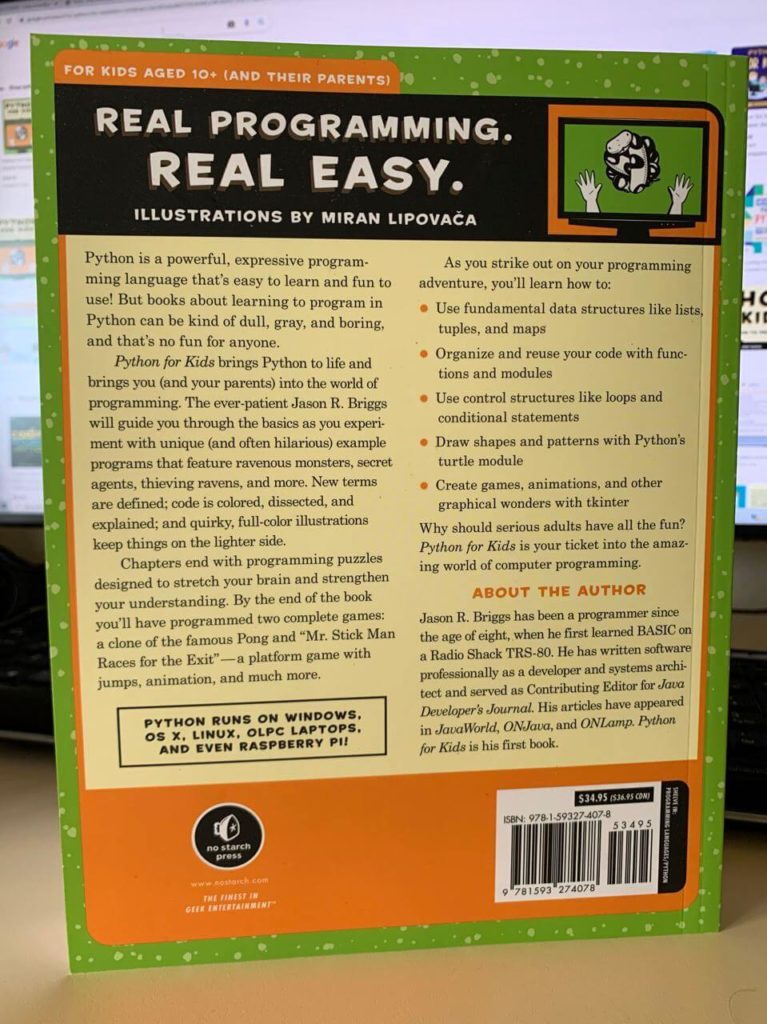
Summary
Python for Kids, a Playful Introduction to Programming is by far the best python book for kids to learn how Python works and how to use it.
Fun activities and colorful illustrations bring coding to life. Explanations are easy enough for kids to follow on their own and puzzles help solidify their knowledge.
What’s more! Kids get to code up two games at the end of the book.
Who’s It For
The book is designed for 10 year old kids and older. However, it’s an excellent book for anyone getting started in python, no matter the age.
What’s Covered
Classes and objects, data structures, functions and modules, control structures, drawing shapes and patterns, and creating animations and games.
Pros
- Well-written and organized
- Uses 4th – 5th grade vocabulary
- Full-color illustrations
- Detailed without being overwhelming
- Puzzles strengthen learning
- Kids get to code up two games
Cons
- Some topics are way beyond a child’s level
Where to Buy
Coding for Kids: Python: Learn to Code with 50 Awesome Games and Activities
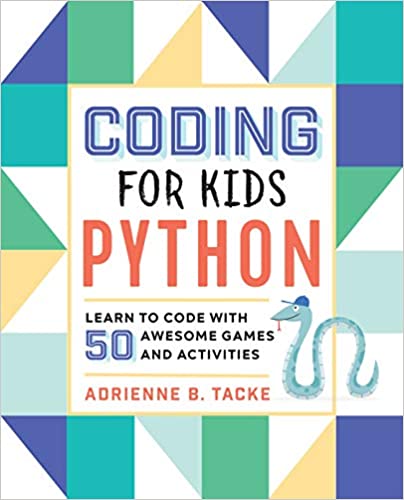
Summary
Coding for kids: Python uses silly games and fun activities to make learning python easy and fun for children starting from age 10.
Blended into the fun are sample lines of code, clear instruction, and explanations of terms.
Who’s It For
Although the book is designed with children ( 10+ year olds) in mind, even adults find it a simple and fun way to learn and apply python.
What’s Covered
Kids learn the basics of python, writing code, debugging, drawing pictures, and even developing games.
Pros
- Uses innovative games and exercises
- Simplifies python and makes it fun
- Has easy to follow instructions
- Activities to solidify what they learn
- Difficult challenges to tackle
- Colorful illustrations and screenshots
- Teaches problem solving skills
Cons
- Requires some guidance from an adult
Where to Buy
Best Python Books for Intermediate Python Coders
Python Tricks: A Buffet of Awesome Python Features
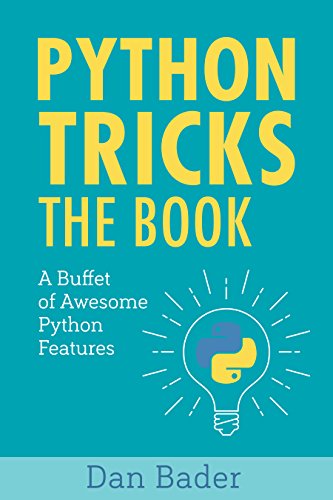
Summary
By Dan Bader
Python Tricks is a brilliant book for intermediate level python developers.
Dan Bader has a knack for presenting ideas in a way that makes even hard to understand concepts make sense and sink in at first read.
As you step up into the next level in your python learning journey, Python Tricks will make you a more efficient python developer and help you write beautiful idiomatic code.
Who’s It For
Python Tricks is a fantastic book for intermediate python developers. It’s also a great resource for seasoned programmers looking to add python to their resume.
What’s Covered
Python Tricks starts with the basic concepts such as functions and moves to more advanced python topics. It explains the best practices and offers valuable tips and tricks.
Pros
- A quick but very helpful read
- Written in an engaging style
- Clear phrasing and presentation
- Simple and practical examples
Cons
- Not a comprehensive book if you want to become an expert
Where to Buy
Effective Python: 90 Specific Ways to Write Better Python, 2nd Edition
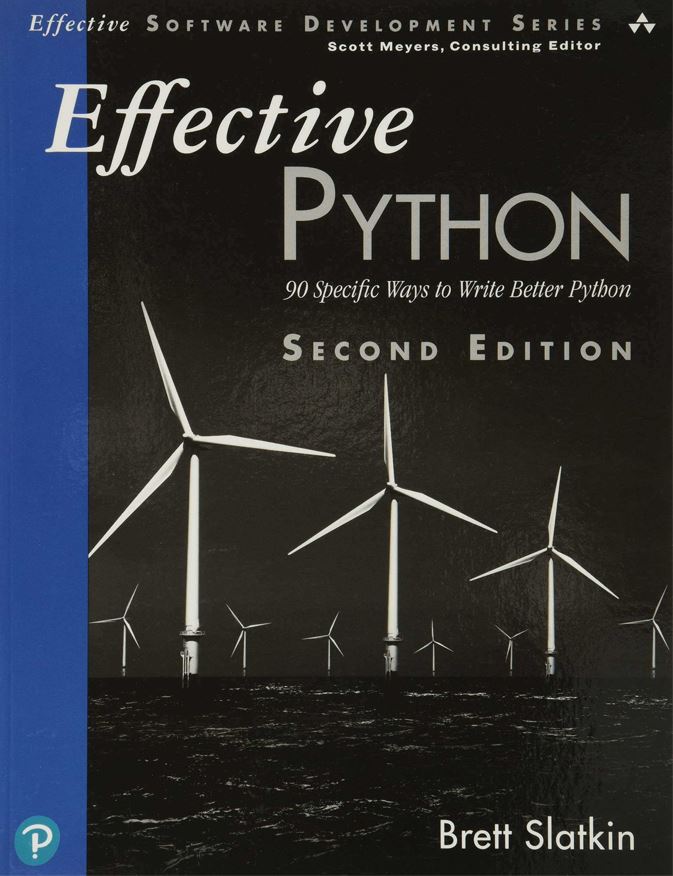
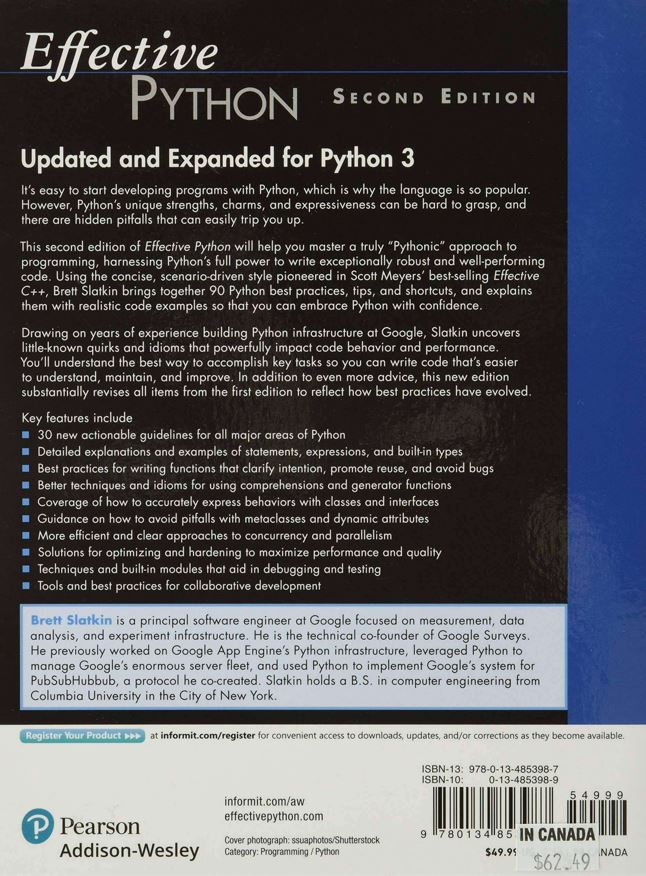
Summary
Effective Python is a treasure trove of python specific tips and techniques that will make your code easier to understand, more secure, and faster.
It does a very good job of explaining python best practices and quirks.
Who’s It For?
Effective Python is great for intermediate python programmers looking to get to know python better as well as programmers already proficient in other programming languages but new to python.
What’s Covered
Classes, interfaces, concurrency and parallelism, metaclasses, robustness, testing, debugging, collaboration…
Pros
- Covers python specific features
- Well thought out examples
- Thorough but concise explanations
- Easy to read and understand
Con
- Not comprehensive as it only delves into specific topics
Where to Buy
Best Python Books for Advanced Pythonistas
Fluent Python: Clear, Concise, and Effective Programming, 1st Edition
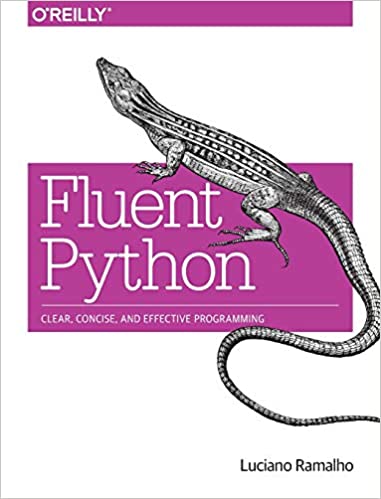
Summary
Fluent Python is the best book to take your python skills to a whole new level. Even the most advanced python programmers admit to learning new things or gaining a different perspective with this book.
Being the best book for understanding pythonic tricks, it will teach you how to use the best but lesser known features of the language to write shorter, faster, and more readable code.
Who’s It For
If you’re already an advanced python programmer and want to dive deep under the covers or become fluent in Python 3, there’s no better book to take you there than Fluent Python
If you’re an advanced programmer in other languages, Fluent Python will show all the features that make Python unique so you can make the most of it.
What’s Covered
Python data model, data structures, functions as objects, object-oriented idioms, control flow, duck typing, generators, decorators, abstract base classes, multiple inheritance, and meta programming.
Pros
- A very large and in-depth resource
- Structured approach to mastering python fast
- Simple and easy to understand examples
- Teaches the what, the how, and the rationale
- Easy and even entertaining to read
- Helpful in the transition to Python 3
Cons
- Rarely goes beyond the standard libraries
Where to Buy
Python Cookbook, Third Edition

Summary
Packed with practical recipes written and tested with Python 3.3, Python Cookbook is the best book for getting up to speed with Python 3.
The book is packed with high-quality examples of code you can use as well as explanations of when and why to use the code.
It will give you great insight into the workings of Python under the hood and have you producing elegant code with minimal lines.
Who’s It For
Python Cookbook is for the advanced programmers looking to understand the nuances of python 3 as well as adopt a modern style of coding with python.
What’s Covered
Python Cookbook is a very comprehensive python book.
It covers the core of the Python language, addresses a wide range of application domains, and goes over new Python 3 features.
It starts with the basics and gradually moves to advanced topics such as metaprogramming and concurrency.
Pros
- Covers a wide range of topics
- Easy to advanced recipes
- Teaches modern tools and idioms
- Makes a great python resource
- Great reference book for python 3
- Uses bite-sized portions
- Explains the how and the why
Cons
- Too advanced for beginners with only a knowledge of the basics
Where to Buy
Best Book for Learning Python For Machine Learning
Introduction to Machine Learning with Python: A Guide for Data Scientists
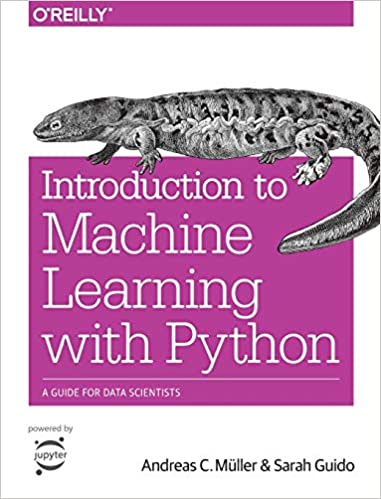
Summary
By Andreas C. Müller and Sarah Guido
Introduction to Machine Learning with Python is a fantastic introduction to machine learning in Python and the best book for getting started in machine learning.
It will teach you how to build machine learning applications without overwhelming you with the theory and math behind the algorithms.
It is well written, well organized, and has very good examples and intuitive explanations of concepts.
Who’s It For
Although the book is beginner friendly, you will get the most out of it if you’re at least familiar with NumPy, Scikit-learn or any other data science or machine learning library.
What’s Covered
Fundamental concepts, machine learning algorithms, data presentation, model evaluation, parameter tuning, pipelines, processing techniques, supervised learning, feature engineering…
Pros
- Makes machine learning easy to learn for beginners
- Intuitive explanations of models
- Well-written and organized
- Easy for a beginner to grasp
- Uses hands on examples
Cons
- Explanations for complex topics leave a lot to be desired
- Experienced programmers might find it too basic
Where to Buy
Best Book for Learning Python for Data Analysis
Python for Data Analysis: Data Wrangling with Pandas, NumPy, and IPython
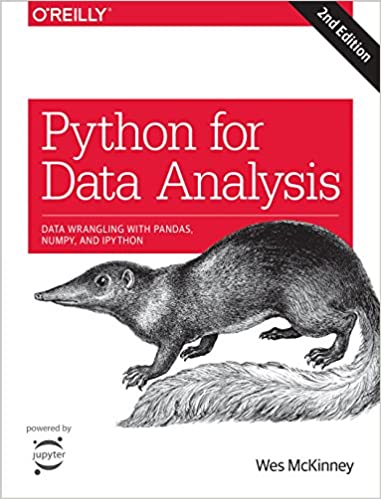
Summary
By: Wes McKinney
Python for Data Analysis uses easy to follow and practical case studies to teach python programming in data analysis.
It will show you how to organize, manipulate, process, clean, and crunch data using python tools and libraries.
Who’s It For
Anyone who wants to learn Python programming for data analysis will benefit from this book.
It’s great for data scientists who want to add python skills to their arsenal as well as python programmers looking to get into data science.
What’s Covered
The book is all about pandas, NumPy, IPython, Jupyter, matplotlib, and Seaborn for data analysis. It also teaches how to use scikitlearn for machine learning.
Pros
- Equips readers with practical tools
- Updated for Python 3.6
- Practical and modern approach
- Numerous, detailed code examples
- Well structured into small chunks
Cons
- Use of random numbers makes examples too abstract
- Requires at least basic knowledge of python or programming in general
Where to Buy
Wrapping Up
Python books are written with different students in mind. The best book for learning python will depend on whether you’re just getting into code and have decided to get started with Python.
Or perhaps you’re well versed in other programming languages but new to python, or already an intermediate or advanced programmer looking to take your python skills to the next level.
Written by expert pythonistas and top rated by learners, the books featured here are currently the best resources for learning python.
Pick the right book for your skill level and goals and you will be on your way to becoming a great pythonista.
Mike is the creator of Go With Code and a coder at heart 🙂